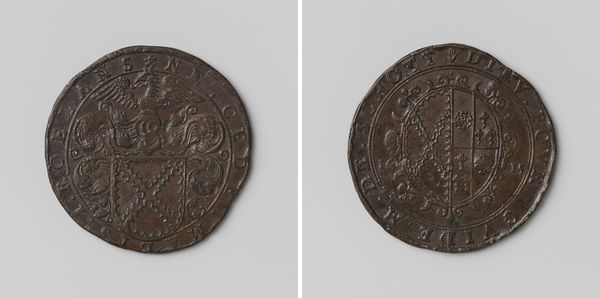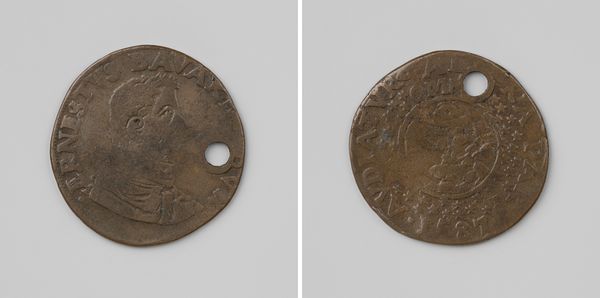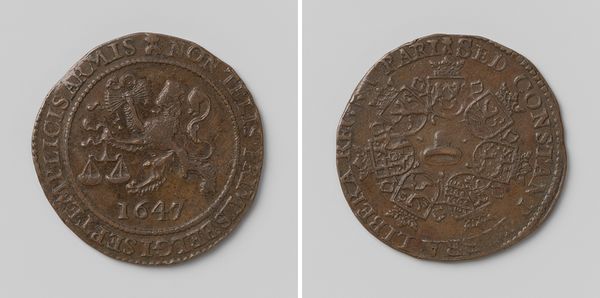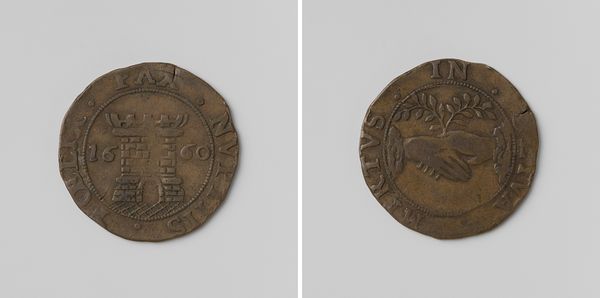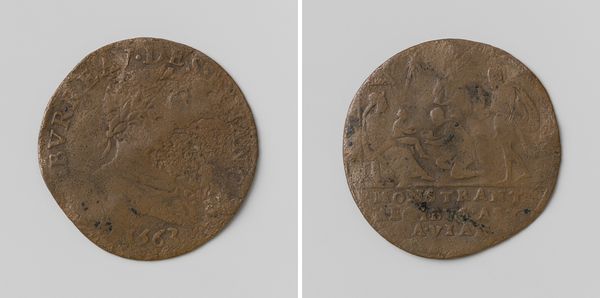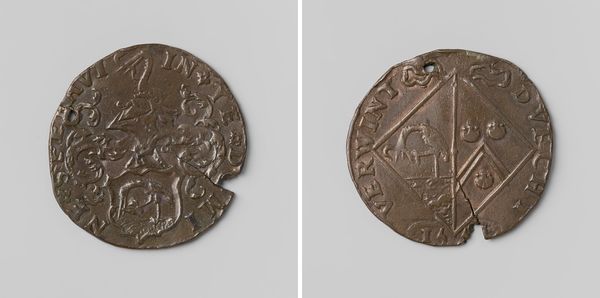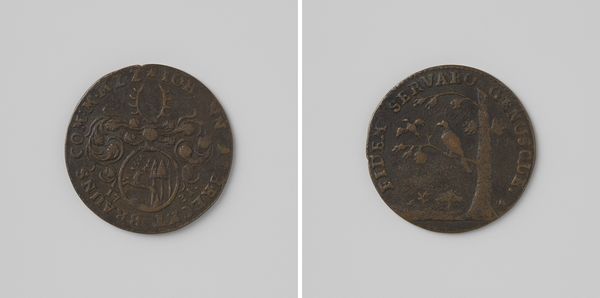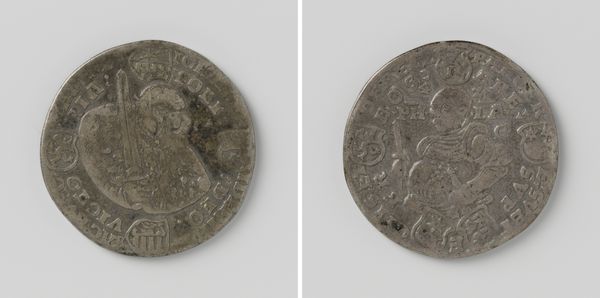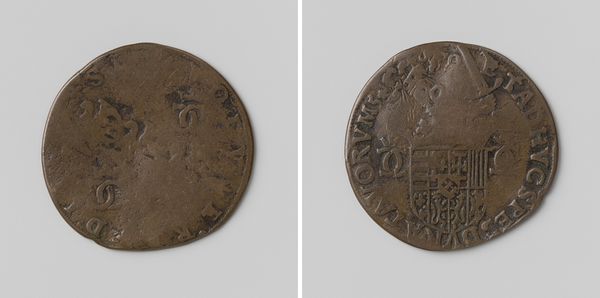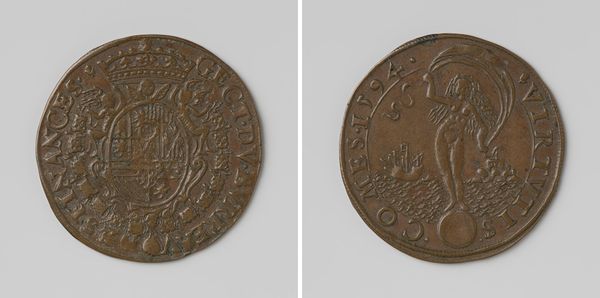
carving, bronze, sculpture
#
portrait
#
carving
#
sculpture
#
bronze
#
11_renaissance
#
sculpture
#
carved
Dimensions: diameter 3.1 cm, weight 4.63 gr
Copyright: Rijks Museum: Open Domain
Editor: So this bronze carving, titled "Gerard de Groesbeek, prins-bisschop van Luik" from 1568, has two sides – one with a coat of arms and the other seemingly depicting a seated figure. I find myself wondering about the piece's value beyond its symbolic imagery. How would you interpret this work, looking at the process and materials? Curator: It’s easy to get caught up in the symbolism and portraiture, but let's consider the materiality. This wasn't just sculpted, it was cast in bronze. Bronze, as a material, implies a certain level of wealth and technology at the time. Consider the mining of the ore, the smelting process, the skill required to create a mold capable of capturing such detail. Who had access to those resources, and what does that tell us about Gerard de Groesbeek's position in society and the message he wished to convey? Editor: That’s fascinating, the labor behind creating the material. Does that also influence our interpretation of the carving’s meaning or its purpose? Curator: Absolutely. The choice of bronze, its durability, its ability to be reproduced through casting... it all speaks to a desire for permanence and dissemination. Think about coins of the period; they spread power and legitimacy through repeated, material touch. Could this function similarly? Was this object meant to be multiplied or handled? Was the value predetermined or symbolic? The methods and circulation behind such objects shape our experience and reveal the economic systems inherent in their patronage. Editor: So, by examining the production process and the intended audience, we can understand more about the power structures at play in 16th-century Liège. Curator: Precisely. By thinking materially about Gerard de Groesbeek’s sculpture we learn that art's value is tied intrinsically to labour, circulation and power. Editor: That shifts my focus completely. It’s made me think about art history in an entirely new way, considering labor and circulation rather than simply aesthetics.
Comments
No comments
Be the first to comment and join the conversation on the ultimate creative platform.
